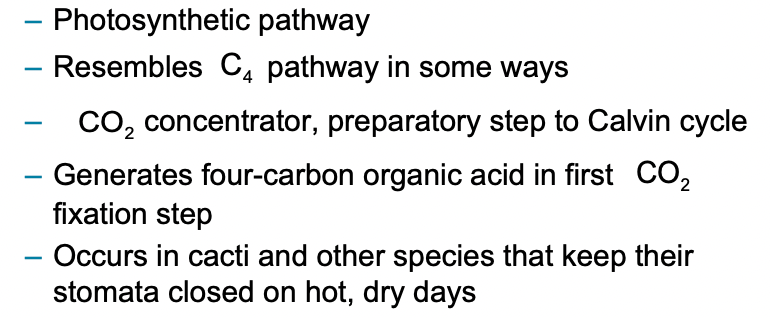What are the two types of energy in Chemical Reactions?
Kinetic and Potential Energy
Which biologists found Glycolysis?
Hans and Edward Buchner
The calvin cycle has some processes that occurs. What are those processes called?
Fixation phase
Reduction phase
Regeneration phase
Compare the difference between unicellular and multicellular organisms?
•Unicellular organisms must contend with constant shifts in environmental conditions
•Cells in multicellular organisms must communicate and cooperate with each other:
How do enzymes work?
Enzymes work via activation energy and transition state.
Does Fermentation oxidize glucose? Does it oxidize glucose fully?
Yes it does oxidize glucose and does not oxidize fully.
Who studied photosynthesis in purple sulfur bacteria? The organisms were found to be what kind of feeders?
Cornelius van Neil
Autotrophs
What is the role of the Extracellular membrane?
–Helps define cell shape
–Attaches it to other cells
–Acts as a first defense
Enzyme catalysis has three steps which are?
Initiation
Transition state facilitation
Termination
What pathways plays a role in metabolism and what is the difference between both?
•Catabolic pathways:
–Involve the breakdown of molecules
–Often harvest stored chemical energy to produce A T P
•Anabolic pathways:
–Result in the synthesis of larger molecules from smaller components
–Often use energy in the form of A T P
Describe the CAM pathway?

How do cells communicate via cell-cell gaps?
•Direct connections between cells in the same tissue allow cells to work together:
–Ions and small molecules can pass between cells
–May regulate gene expression
–May activate on inactivate proteins
What is the difference between exothermic and endothermic reactions?
Exothermic: Reactions release heat, change in enthalpy is negative and there is less potential energy than reactants.
Endothermic: Heat energy is taken up during reaction, change in enthalpy is positive, and there is higher potential energy than reactants.
Pyruvate is processed by what? What is the series of reactions it goes through?
Pyruvate is processed by pyruvate dehydrogenase.
–One of its carbons is oxidized to CO2 and NADH is produced.
–The remaining two-carbon unit is attached to coenzyme A, producing acetyl C o A
What activates Rubisco and describe what it does?
Activated by regulatory molecules

What is the difference between tight junctions and gap junctions in animal cells?
Gap Junctions:
–Connect adjacent cells by forming channels
–Allow flow of small molecules between cells
–Communication portals:
▪Help adjacent cells coordinate activities
▪Allow rapid passage of regulatory ions and small molecules
Tight Junctions:
–Cell–cell attachment composed of membrane proteins in adjacent animal cells
–Chains of these proteins line up and bind to each other
–Stitches two cells together with watertight seal
–Usually found in epithelia
–Dynamic and variable
–May loosen to permit transport
–Can open and close in response to changes in environment
Is enzyme structure critical to its function? What are the activity of enzyme changes due to?
Yes it is critical to its function
Temperature, pH, Interactions with other molecules, Modifications of primary structure
What are some enzymes and reactions of the Citric Acid cycle?
Citrate Synthase: Transfer the 2-carbon acetyl group from acetyl CoA to the 4-carbon molecule oxaloacetate to produce the 6- carbon molecule citrate.
Fumarase: Converts fumarate to malate by the addition of one water molecule.
Aconite: Converts citrate to isocitrate by the removal of one water molecule and the addition of another water molecule.
Are chlorophyll a and b similar in structure? Describe the two fundamental parts. What are their classes of pigment?
Yes they are
–Long isoprenoid “tail:”
▪Interacts with proteins embedded in thylakoid membrane
–“Head” consisting of large ring structure with magnesium atom in middle:
▪Light is absorbed in the head
Chlorophyll A: Reflects blue light Chloropyll B: Green pigments that absorbs blue
What is the process of when signal transduction converts an extracellular signal to an intracellular signal?
Signal reception
Signal transduction from extracellular signal to intracellular signal. Signal may be amplified. Each signaling molecule activates more than one molecule in the next step, so that one receptor protein can trigger many intracellular signaling molecules.
Signal response may lead to changes in cytoplasmic protein activity.
Signal response may lead to change in gene expression.